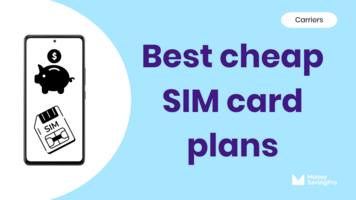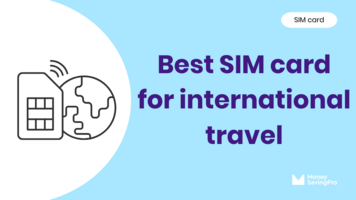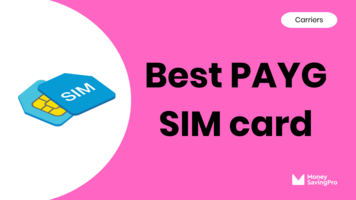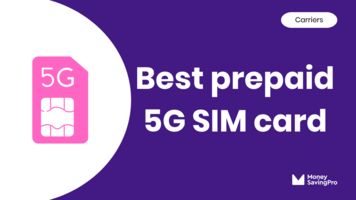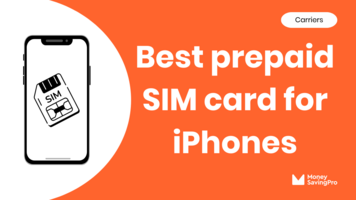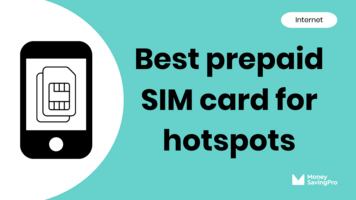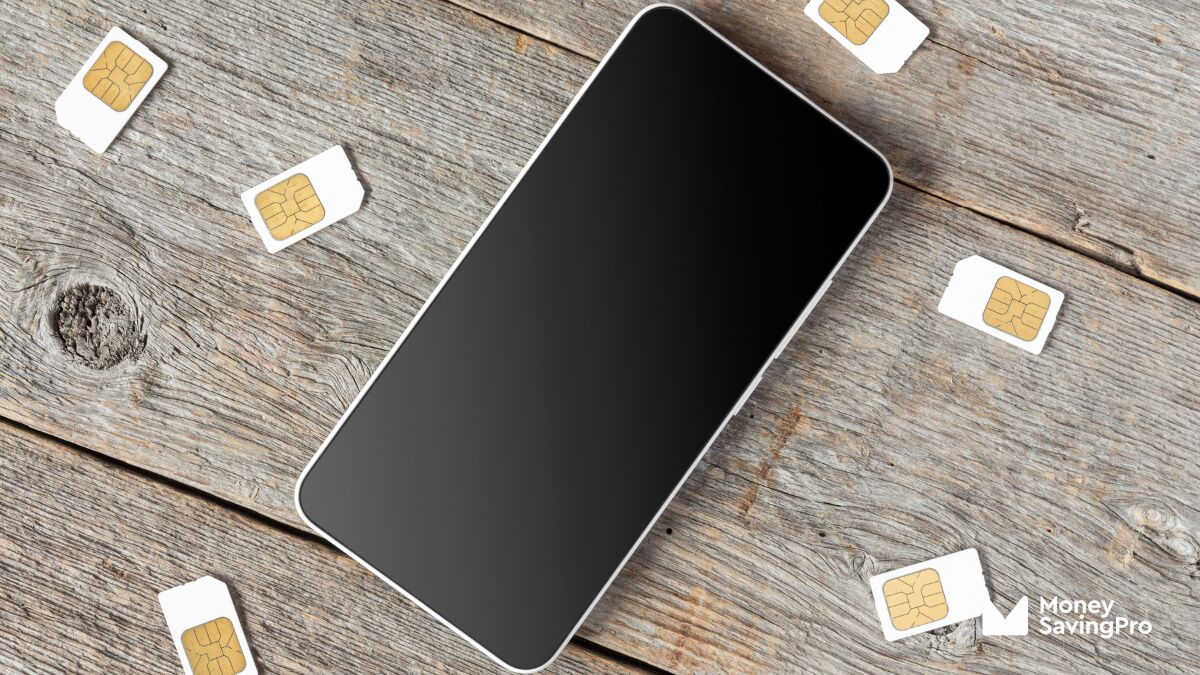
We've all heard of a SIM card, but what does it actually do? If you're interested in finding out more about what a SIM card does, keep reading to find out more.
After over ten years in the industry, I am well-versed in the world of SIM cards. I'll help answer what they do and the types available, and I'll also touch on the latest edition - eSIMs.
Short answer: SIM cards store information like the user's identity, phone number, location, network authorization data, contact lists, etc., and use it for performing specific functions.
What is a SIM card?
SIM cards are small, removable chips inserted into your cell phone. SIM stands for Subscriber Identity Module.
Think of it as your phone's ID card – it contains essential information that your mobile carrier needs to identify and authenticate your device on its mobile network.
Here's how SIM cards work:
- Identification: The SIM card holds your phone number, unique subscriber details, and authentication keys. This information lets the service provider recognize your mobile device and connect it to your account.
- Authentication key: When you turn on your phone or mobile device, the SIM card communicates with the carrier's network to verify your identity. Once authenticated, you can make phone calls, send SMS messages, and use mobile data on your carrier's network.
- Storage: SIM cards also store a limited number of contacts and text messages, making it easy to transfer personal information between mobile devices.
What different types of SIM cards do
Now that we know what a SIM card does, let's explore the different types of SIM cards available:
- Standard SIM card: This is the original SIM card size, measuring about 25x15mm. While it's becoming less common, some older devices still use it.
- Micro SIM card: Smaller than the standard SIM card, micro SIM cards measure around 15x12mm. They're often found in older smartphones.
- Nano SIM card: Today's most common SIM card size is approximately 12.3x8.8mm. Nearly all modern smartphones use nano SIM cards.
As you can see, SIM cards seem to be shrinking as the technology grows. In fact, the smallest SIM card, the nano-SIM, is slowly being replaced by eSIM, or embedded SIM cards.
If you have a new phone (released in the last five years or so), chances are you have an eSIM-compatible phone.
Whether you have a traditional SIM card or an eSIM, all of these SIM cards work in the same way by storing information and giving you access to the carrier's network.
What is an eSIM?
In recent years, a new player has entered the SIM card arena – the eSIM (embedded SIM).
Unlike physical SIM cards, eSIMs are built into your device's hardware and can be remotely programmed with different carrier profiles.
Here are some key points to know about eSIMs:
- Convenience: With an eSIM, you can switch carriers or plans without needing a physical SIM card. This can save you time and money when changing your cell phone plan.
- Compatibility: Not all phones support eSIMs, so it's an essential component to check if your mobile phone is eSIM-enabled.
- International travel: eSIMs are particularly handy when traveling internationally. You can easily add a local data plan and phone service without swapping a physical SIM card.
Dual SIM card phones
Most phones nowadays have dual SIM card capabilities. This means most new smartphones, whether an iPhone or Android phone, come equipped with two SIM card slots.
It allows you to use two different phone numbers or even two separate carriers on one phone. Most newer cell phones have a physical card and eSIM combo or have completely switched to dual eSIMs.
Here's how dual SIM cards can benefit you:
- Cost-efficiency: With a dual SIM card phone, you can have a primary SIM for your everyday communication needs and a secondary SIM for a budget-friendly data plan or international travel. This way, you can maximize your savings by choosing the most cost-effective plans for each SIM.
- Convenience: A dual SIM card phone can be a game-changer if you frequently travel for work or leisure. You can keep your primary number and carrier network active while using a local SIM card in the secondary SIM slot to avoid hefty roaming charges.
- Separate personal and business: If you juggle personal and business phone calls, having two SIM cards allows you to separate the two. Maintain a work-life balance while simplifying billing and expense tracking.
- Flexibility: Dual SIM card phones offer the flexibility to choose different mobile operators for each SIM, ensuring you get the best network coverage and pricing for your specific needs.
How can SIM cards save me money?
Now that you understand the significance of SIM cards in terms of mobile communication, I'll share how they can be a powerful tool for saving money on your cell phone plan.
BYOD
SIM cards enable you to bring your own device (BYOD), allowing you to keep your current phone rather than purchasing a new phone through your carrier. This can result in substantial upfront savings.
Switch plans or carriers
You can reduce your monthly bill significantly by switching to a more cost-effective plan or carrier. Many budget-friendly MVNO plans offer the same call quality, data speeds, and coverage as more expensive options.
It also makes it easy to take advantage of special promotions, discounts, and even prepaid plans, giving you more control over your spending.
With a SIM card, you're not locked into a contract, so you can adapt your plan to your needs and budget, ultimately putting more money back in your pocket. So, if you want to trim your monthly expenses, take into account the money-saving potential of a simple SIM card swap.
SIM card FAQs
Yes, you can usually keep your phone number when switching cell phone carriers. This process, known as "porting" your number, is straightforward.
Refer to your device's user manual for specific instructions, but in general, you'll need a SIM card tool or a paper clip to eject the SIM card tray.
In most cases, yes. Unlocked phones are not tied to a specific carrier. You can use them with any SIM card compatible with your phone's network.
Most new devices can still work if you have a Wi-Fi network connection. However, you can only send and receive calls and SMS messages if you connect to Wi-Fi, and network functions may differ.
Recap
SIM cards are tiny chips that connect cell phones to a mobile network via a service provider.
Whether you opt for a traditional SIM card or an eSIM, both play essential roles in keeping you connected while potentially helping you cut costs. When switching to a cheaper plan, remember to check if your phone is unlocked, and if needed, acquire the appropriate SIM card for your new carrier.
Armed with this knowledge, you'll be well on your way to reducing your cell phone bill without sacrificing connectivity.
SIM card FAQs
- SIM Card Sizes
- What Does a SIM Card Do?
- SIM Cards
- How Much is a SIM Card?
- How to Activate a New SIM card
- How to Unlock a SIM Card Without a PUK Code
- Where Can I Buy a SIM Card?
- How to Get a Free SIM Card
- How to Insert a SIM Card
- How to Remove a SIM Card
- How to Replace a SIM Card
- How to Find SIM Card Number
- Carrier Guides
